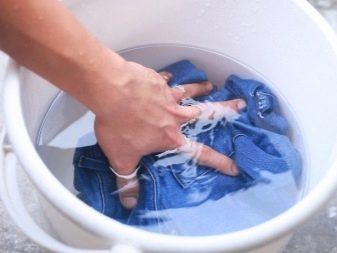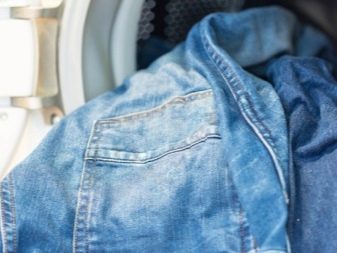Features of denim
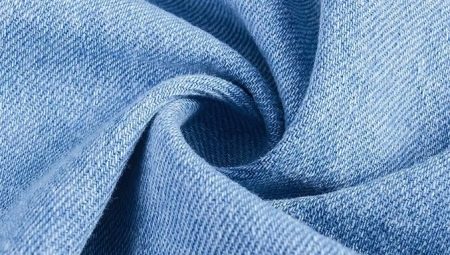
Denim is one of the most popular fabrics today. A lot of different things and accessories are made from it. Matter has a lot of positive qualities, is comfortable and easy to use. From the material of this article, we learn all the main features of denim.

general description
Denim is a dense and opaque material. This is one of the varieties of denim. Often the fabric in question is characterized by high rigidity, does not show elasticity. However, these characteristics largely depend on the components that make up the jeans.
The popular material under consideration is characterized by a relief in the form of an oblique scar. Expressiveness and texture depend on the content of the textiles, as well as the way the fibers are woven in it. The front side of the thick denim material is in blue, and the back side is in white.
Most often, natural high-quality cotton is used in the production of fabric. It can be a kind of raw material from America or Africa.
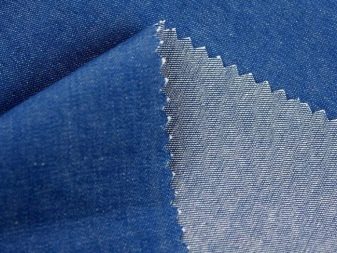
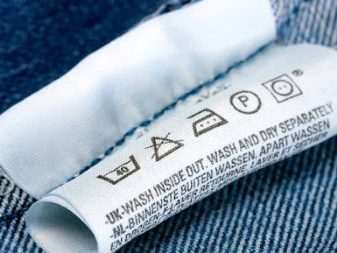
If we take a closer look at the general description of modern denim, then we can highlight the main features that it possesses.
- Jeans have a good level of hygroscopicity. Getting wet in products made from this material is not as easy as it might seem at first glance.
- The matter under consideration is characterized by various degrees of density. Denim can be light, medium, or heavy. In the wardrobe, it is desirable to have several things that have different densities.
- Modern jeans are characterized by breathability. In high-quality denim clothes, human skin can "breathe" without discomfort. The fibers in the canvas perfectly let air through, but at the same time they are able to protect from the wind.
- The fabric is hypoallergenic. High-quality denim fabric does not provoke allergic reactions, and also does not lead to irritation, since it is made from raw materials of natural origin.
High-quality denim fabric, made in accordance with all GOSTs, produces high-quality and very practical things.
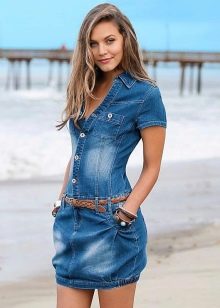
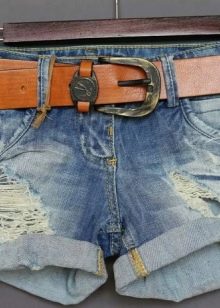
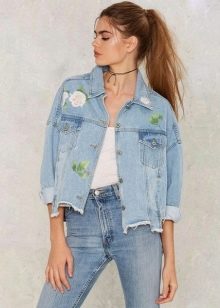
History
The first jeans were created in the 15th century. They were originally worn by sailors. After a while, this material appeared in a city called Nîmes. At the same time, the painting of the canvas was carried out on the territory of another city - Genoa. Levi Strauss is considered to be the man who first created denim pants. The first product was released in 1853. At that time, there was a period of the gold rush. Levy decided he didn't want to get involved in gold mining because of the frenzied competition.
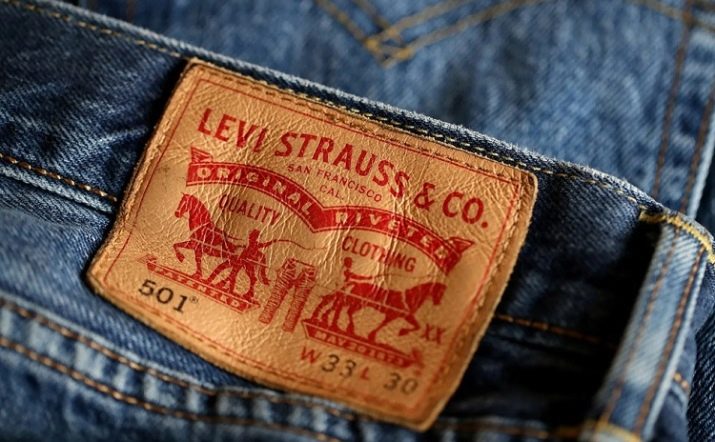
That is why he wanted to trade in fabrics. Strauss developed the new material in San Francisco. The materials sold out very well and quickly. After a while, Levy decided to use denim to make trousers for ordinary workers. Similar products were also sold out very quickly. This is how the very first full-fledged batch of jeans appeared.
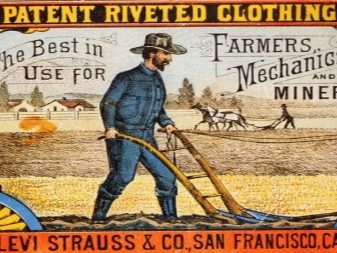

Pants made from the fabric in question quickly became wildly popular. This was easily explained by the level of convenience and durability of the products. As a rule, they were supplemented with a large number of pockets, which was an important nuance for ordinary workers. After the initial batch, many people wanted to buy jeans products. In the same year, Levy and his cousin Jacob Davis decided to open a new firm.
The production of quality items was rapidly gaining popularity. The peak of popularity of new denim came in the 30s of the XIX century. It was this time that was associated with the birth and development of cinematography. Thanks to this, the pants in question came to fame, as they fit perfectly into popular cowboy looks.

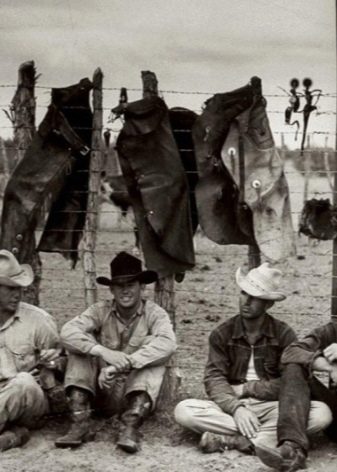
Advantages and disadvantages
Currently, denim is not losing ground, remaining just as popular and in demand. The relevance of the material in question is easily explained by the large number of advantages that it possesses.
Let's outline the main advantages of denim.
- The composition of modern denim fabric contains high-quality and safe fibers of natural origin.
- The material is attractive because it is resistant to wear and tear. Thanks to this, high-quality things made of durable linen can last for many years without collapsing and without losing their original presentation. Today, not every wardrobe item can boast of the same quality.
- Denim products are breathable. Despite the seemingly increased density, the fibers of such a fabric are easily breathable, therefore they do not cause discomfort during wear.
- Things made from the fabric in question can perfectly retain heat at the proper level. It is because of this that denim clothing is often bought for cold and cool seasons.
- Jeans attracts many users because it does not accumulate static electricity.
- High-quality material is not subject to strong creasing. Untidy and rough folds that are difficult to smooth out are practically not formed on it.
- In matters of care, denim is very unpretentious. Users do not have to look for rare and expensive detergents for washing such things.
- The fabric in question is versatile. This popular material is suitable for the production of a wide variety of things. It's not just about clothes, but also about accessories.
- An important advantage of jeans is its attractive appearance. Thanks to this, aesthetic things of excellent quality are obtained from this material.
- Denim is very comfortable to work with. The material does not undergo crumbling, does not begin to curl or stretch during the manufacture of this or that product.
It should be borne in mind that the presence of additional artificial fibers in the denim fabric reduces many of the listed advantages.
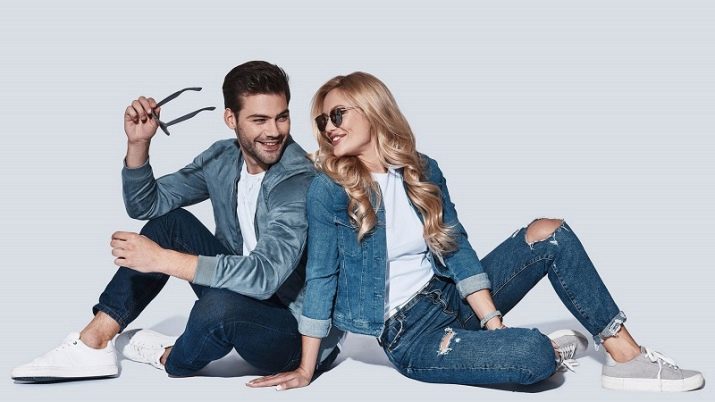
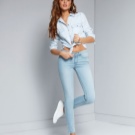
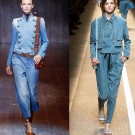
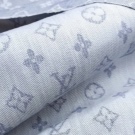

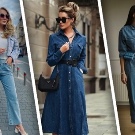
Denim has not only advantages, but also certain disadvantages.
- The fabric shows an impressive degree of shrinkage. This is primarily noticeable after the first wash procedure. Products in which elastane is present sit many times more than other varieties.
- Denim is dyeable. That is why things made from this material are recommended to be washed separately from other items of clothing.
- If you take care of a denim thing incorrectly, then it may lose its original positive characteristics. The product may shrink, tarnish, or stretch too much.
- Over time, denim can undergo severe abrasion.
- After the washing procedure, the fabric in question dries for a long time.
- In addition, denim often hardens after washing.

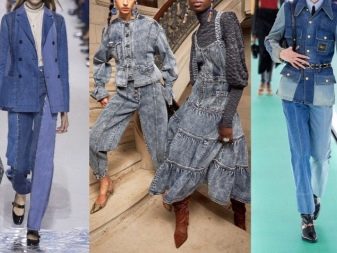
Views
There are many different types of denim nowadays. Each of the options is more suitable for the manufacture of certain wardrobe items.
By weaving technique
All varieties of denim differ in weaving technique. Let's consider the most common options.
- The classic weaving method is most often used in the manufacture of the most expensive and high quality material - denim.
- There may also be a variant of weaving called "herringbone". In accordance with this type, a broken twill is made.
- The twill weave of denim is standard. In this case, the obligatory inclination in the direction from right to left is maintained.
- There is also a type of material such as gin. It assumes a diagonal weave of threads.
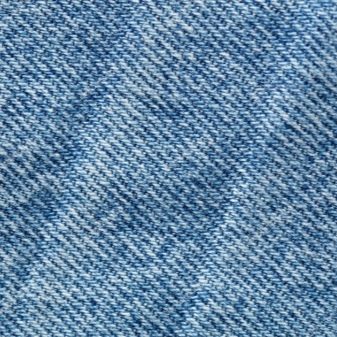
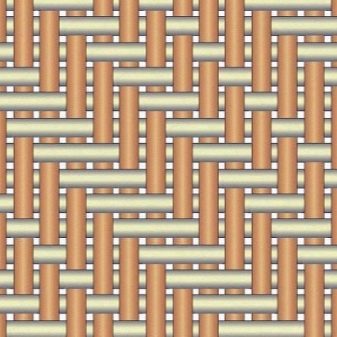
By composition and appearance
All varieties of modern denim fabric are divided according to their immediate composition and appearance. The following variations on this practical fabric stand out.
- Denim. This variation of jeans is the most expensive and the highest quality in appearance. The seamy side of this material is white. Denim is obtained as a result of weaving of dyed and undyed cotton fibers. From the material under consideration, beautiful classic jeans models are obtained, which are highly practical.
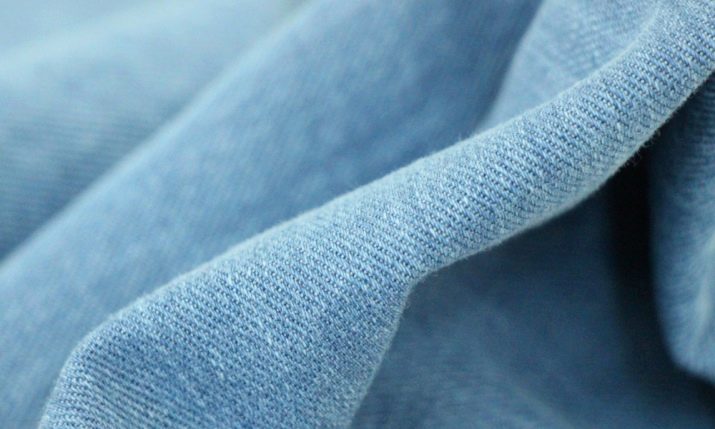
- Ecru. This is the name given to unpainted denim. It is characterized by a natural cotton shade.
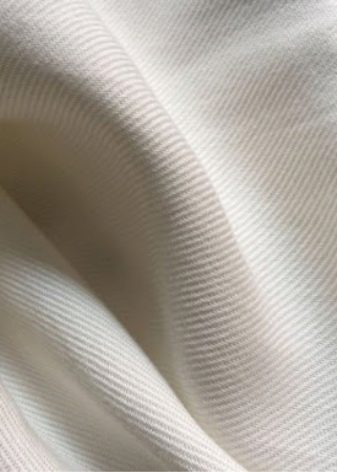
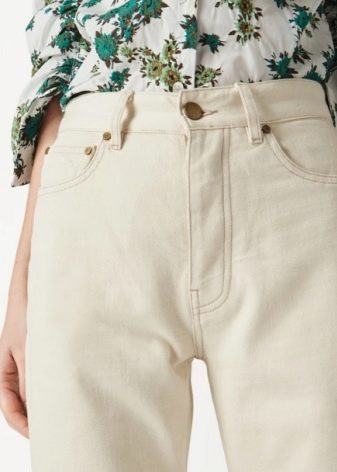
- Gin. The thinnest and most budgetary fabric, which is also made by interweaving threads of two colors. Most often, the specified canvas is made of cotton, considered its dyed version.

- Stretch. Modern stretch fabric is very popular. A lot of high-quality and demanded things are produced from it. The fabric in question is made from a combination of elastane and cotton.
As a rule, women’s wardrobe items are made from stretch, ideally fitting the figure.

- Shaumbri. A very thin and almost weightless variety of the popular fabric in question. Most often, high-quality summer dresses, different models of sundresses, light varieties of stylish shirts are made from it. In addition, original swimwear and lingerie are made from chambri. Lightweight fabric is characterized by a weave of threads different from other options.
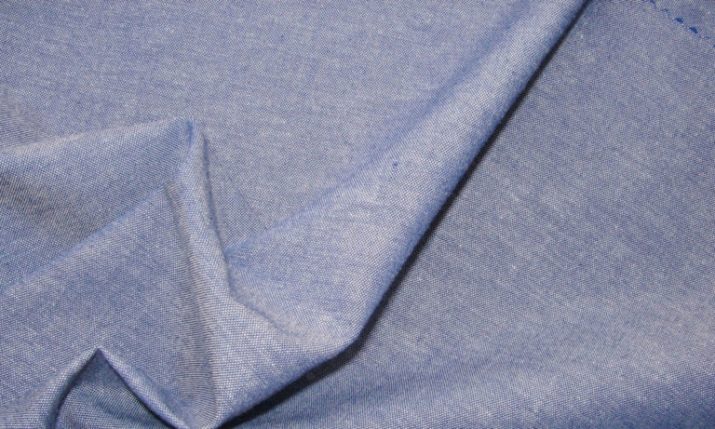
- Bonding. In this material, a knitted layer is added to the cotton fabric. The result is very warm products that are in comfortable contact with the human body.
Today's manufacturers produce many varieties of quality fabrics. Very beautiful and stylish colored things can have not only blue, but also red, yellow, pink, green, black or other surface color. In addition, there is a wide range of products with various prints and decorative components.
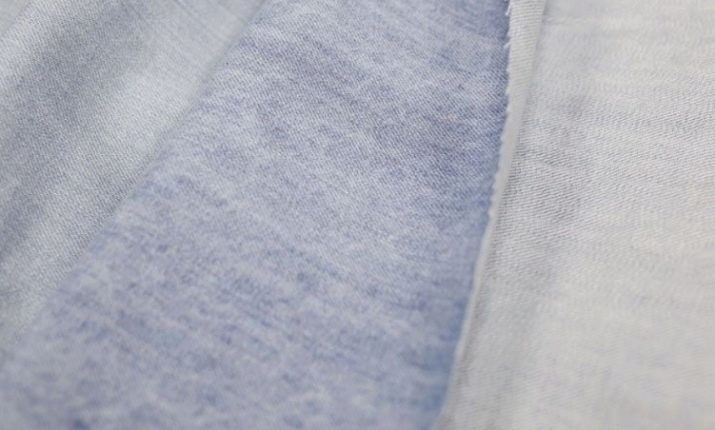
Applications
Modern denim can be either stiffer or softer. Matter can be colored or not painted at all, with a pattern. Due to this range of characteristics, modern manufacturers have the ability to produce a huge number of different products from denim material.
So, from materials that are distinguished by high density, they most often sew:
- fashionable shorts, trousers, jackets, overalls, corsets and vests;
- backpacks, bags, belts and other original accessories;
- boots and shoes;
- baseball caps and panama hats.
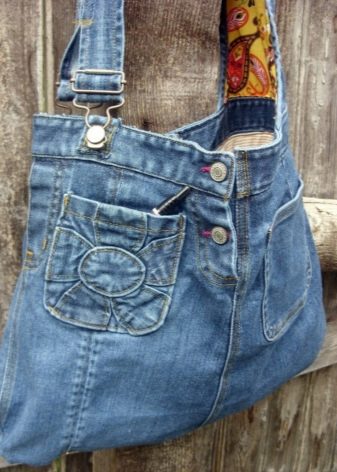
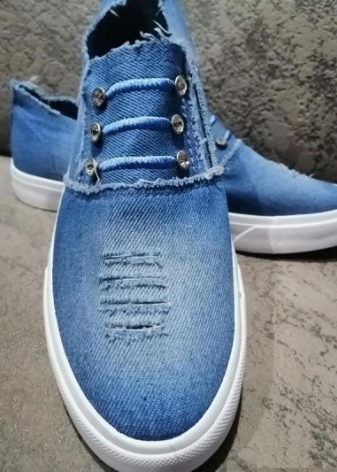
As for softer canvases, such popular products are made of them:
- original blouses, shirts, sundresses and tunics;
- various items of clothing for children, for example, dresses, children's overalls, sundresses of different cut;
- swimwear;
- various variations of underwear.
The fabrics in question are easy to decorate. They can be complemented with ribbons, buckles, lace elements, rivets and patches.
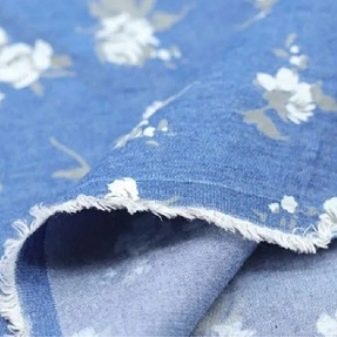
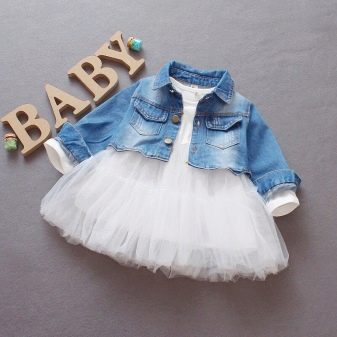
A lot of household products are also produced from the matter in question. It can be:
- kitchen potholders of various types;
- furniture covers, characterized by increased strength and durability;
- original bedspreads.
It is worth noting that home textiles from jeans fit very well into a variety of interior styles. Denim fabric is also suitable for the production of children's toys. Such things perfectly keep the correct shape, are not susceptible to damage or breakage. In addition, the canvas in question can serve as a component for creative homemade jewelry, such as brooches, bracelets or original necklaces. Today, jeans like this can be found on store shelves.
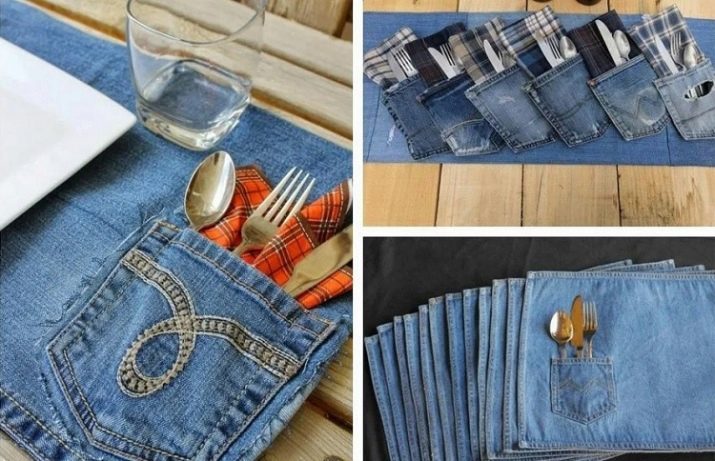
Care rules
Even though denim is dense and durable, it still needs proper care. For example, it is not recommended to send clothes made of jeans to dry cleaning, because after that they can shrink too much.
We will highlight the basic rules regarding the care of denim products.
- Thick fabrics should be washed separately from other garments made from other fabrics.
- Jeans are turned inside out before being sent to the wash. Be sure to cover all the fittings. This applies to zippers, rivets, buttons, buttons.
- It is not recommended to use bleaching agents, because after their exposure, ugly stains or stains may remain on the denim.
- The matter in question should not be wrung out too hard. Instead, it is best to let the water drain naturally.
- Due to its high rigidity, the same denim can perfectly retain its original shape, so things made from it do not have to be ironed. Such products are perfectly straightened on the human body when worn.
- If necessary, the denim items are ironed slightly damp. Due to this, they can be softened.
